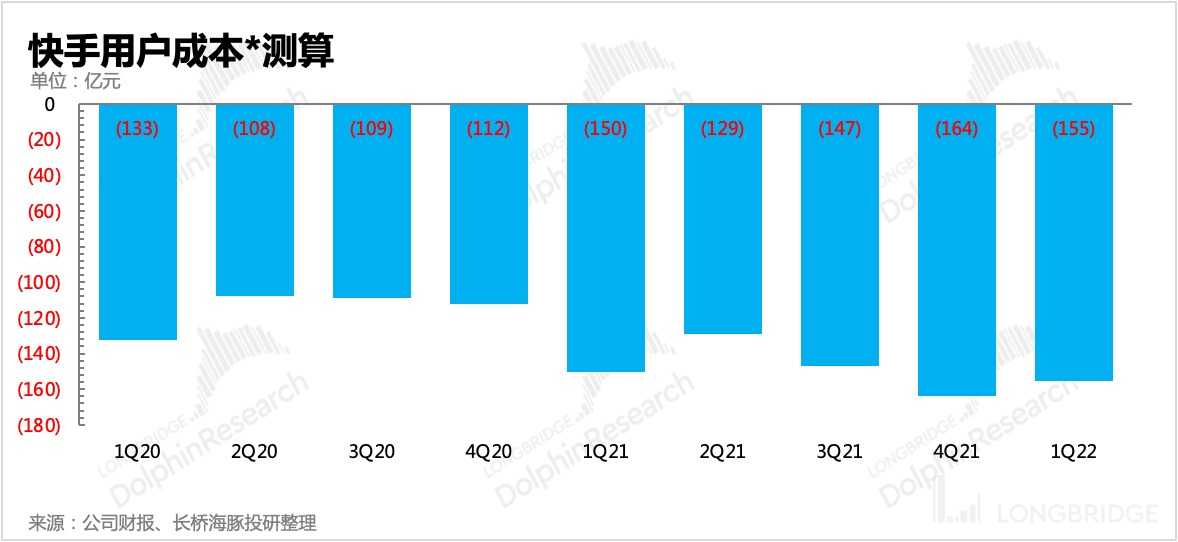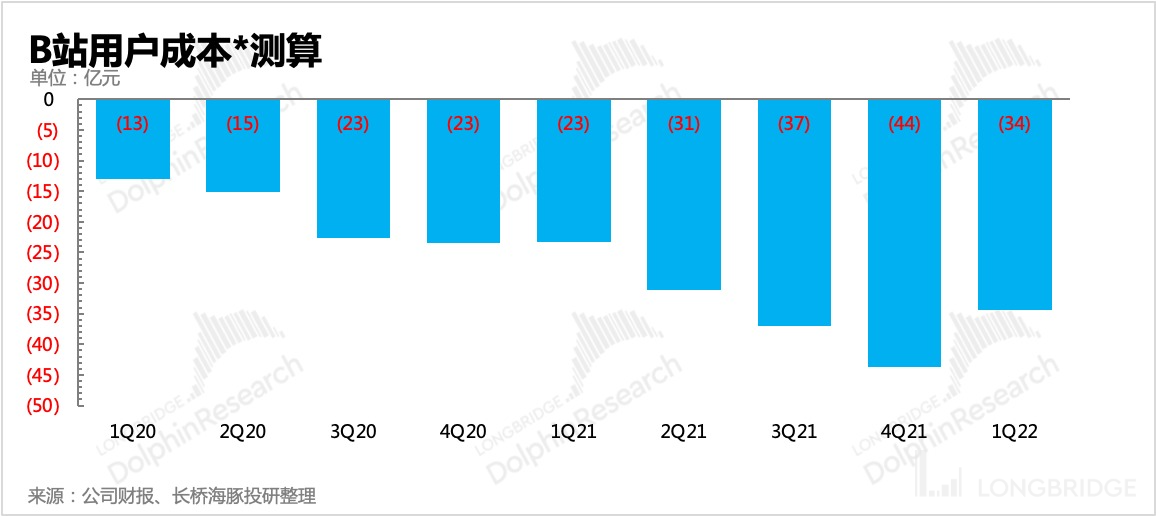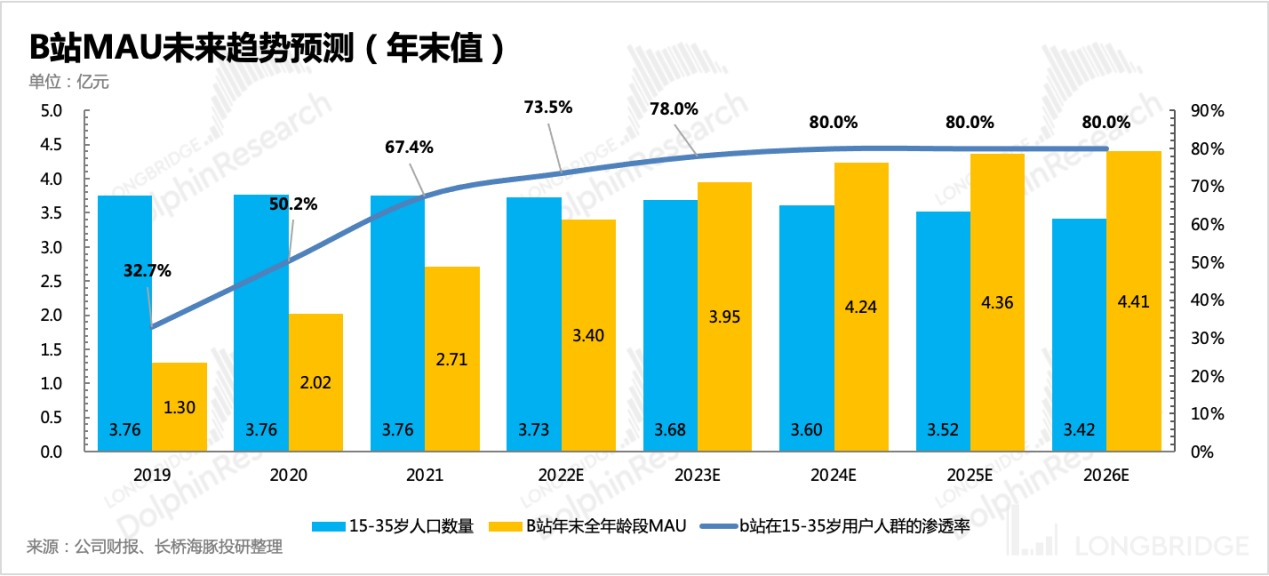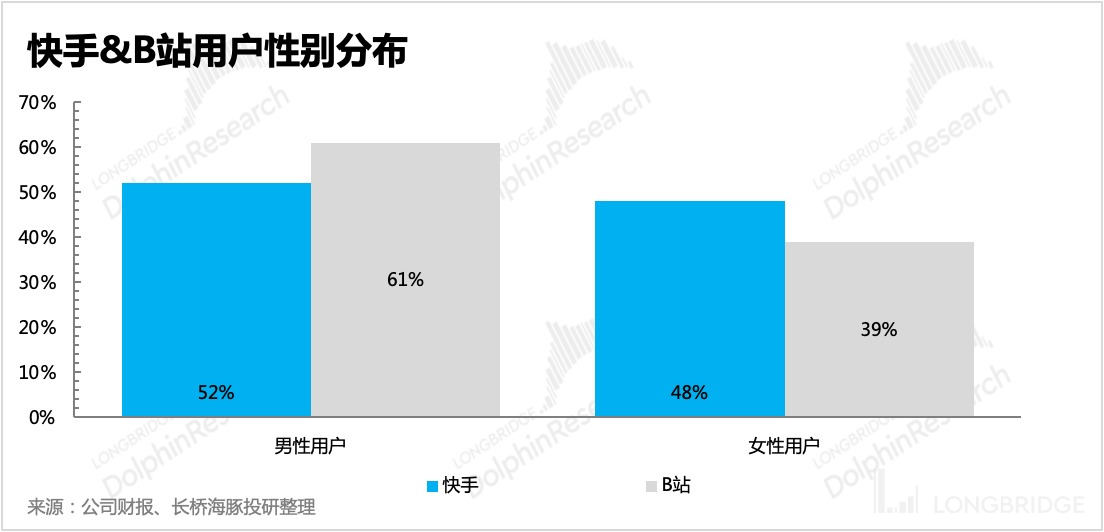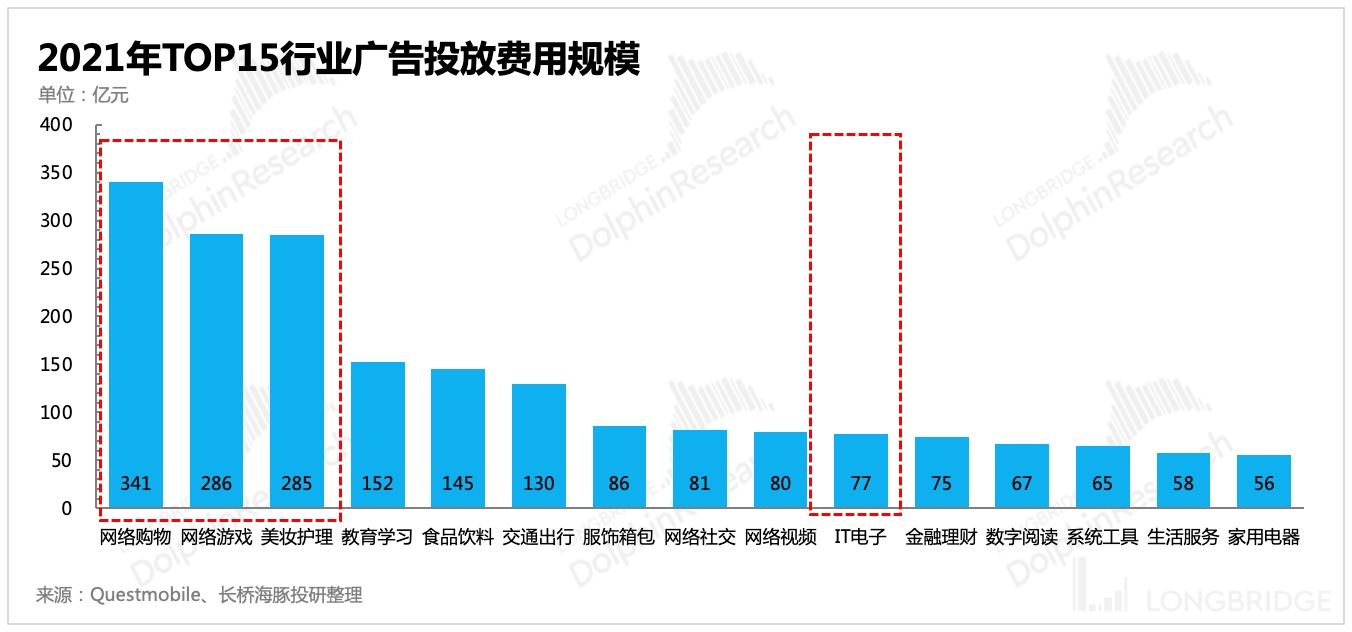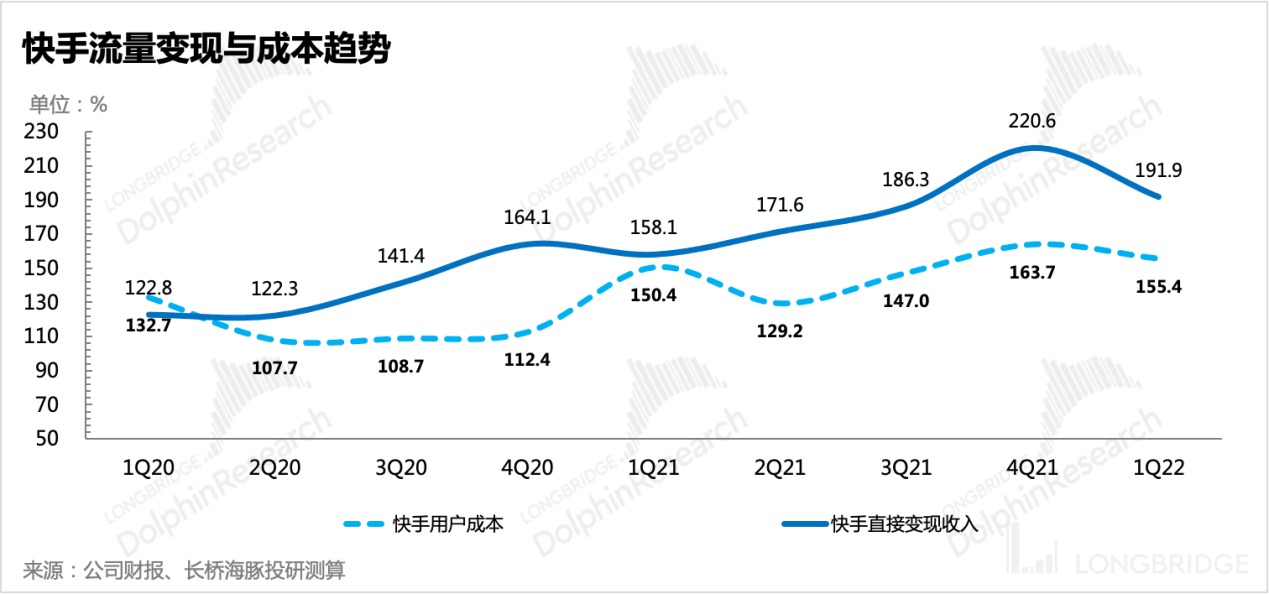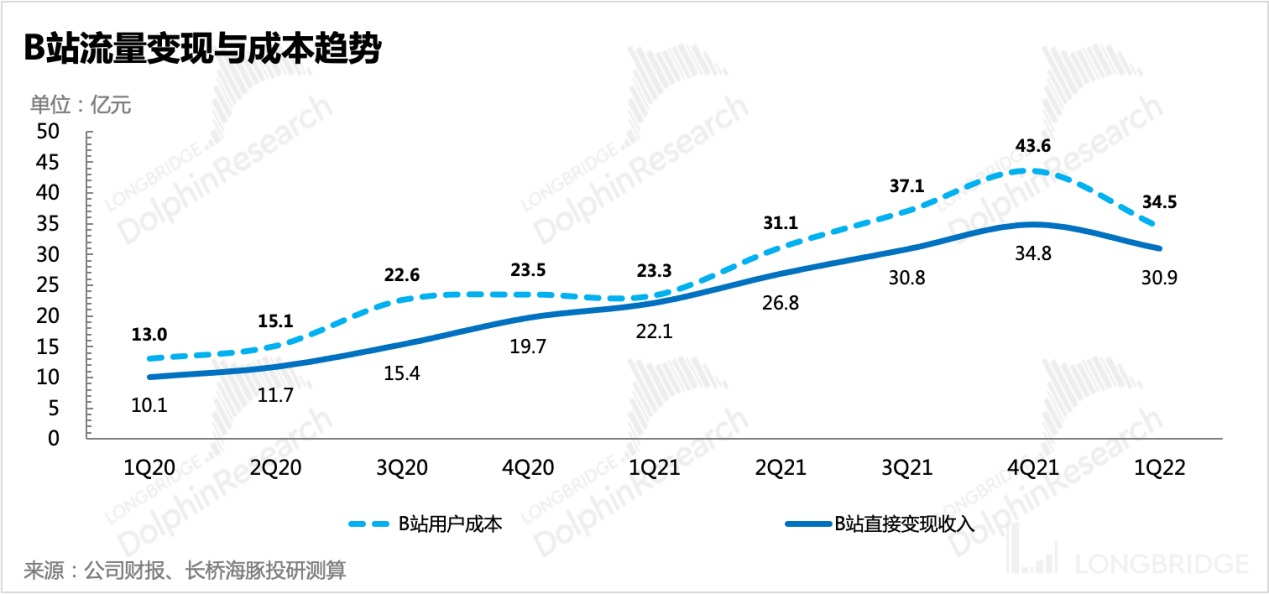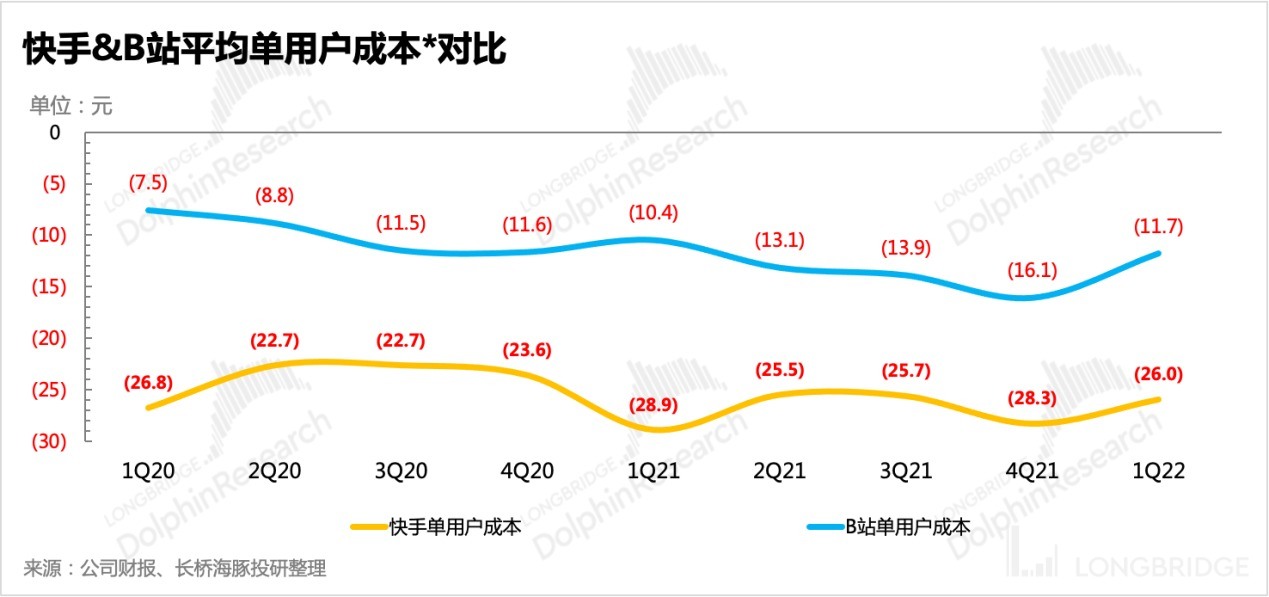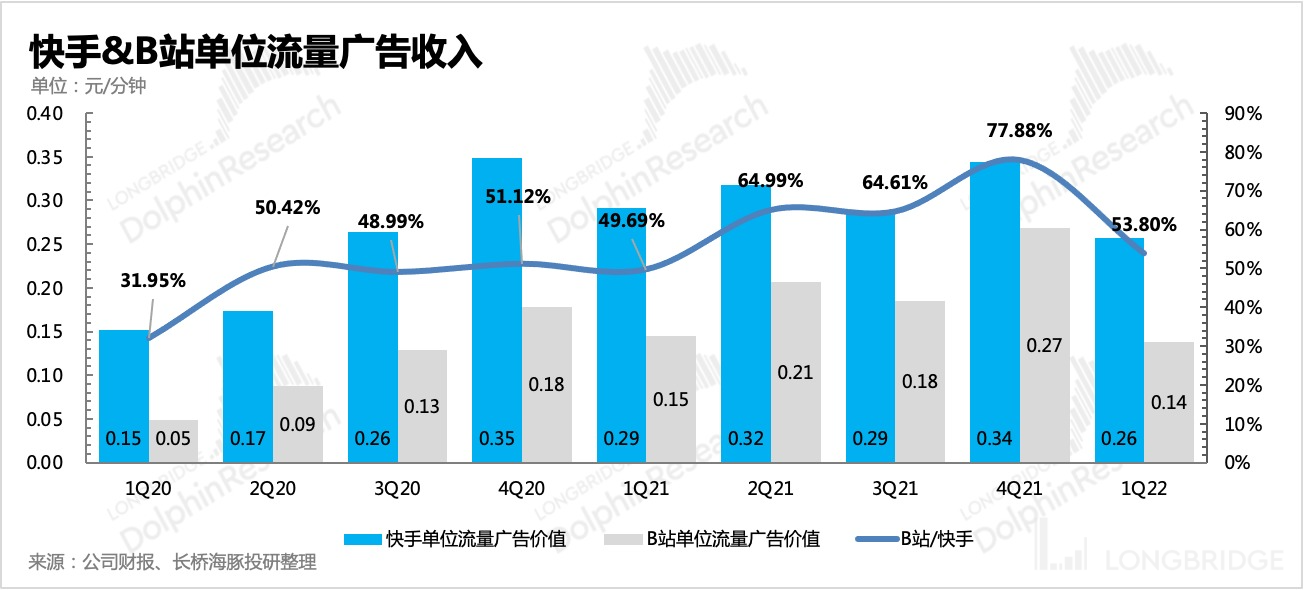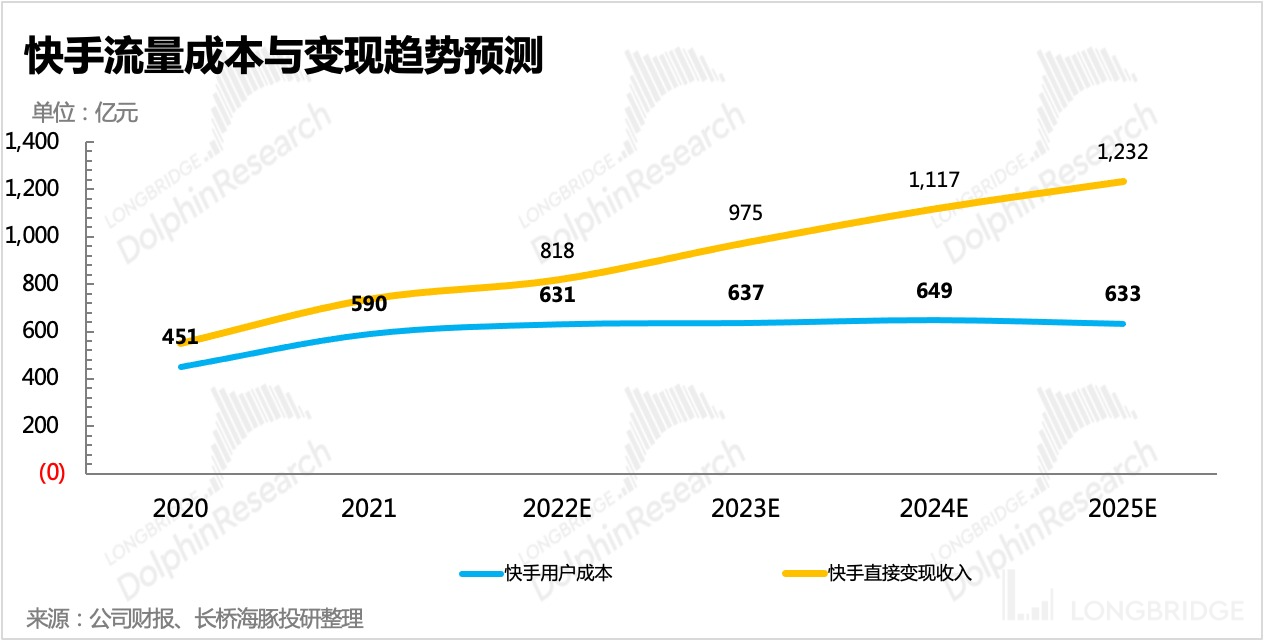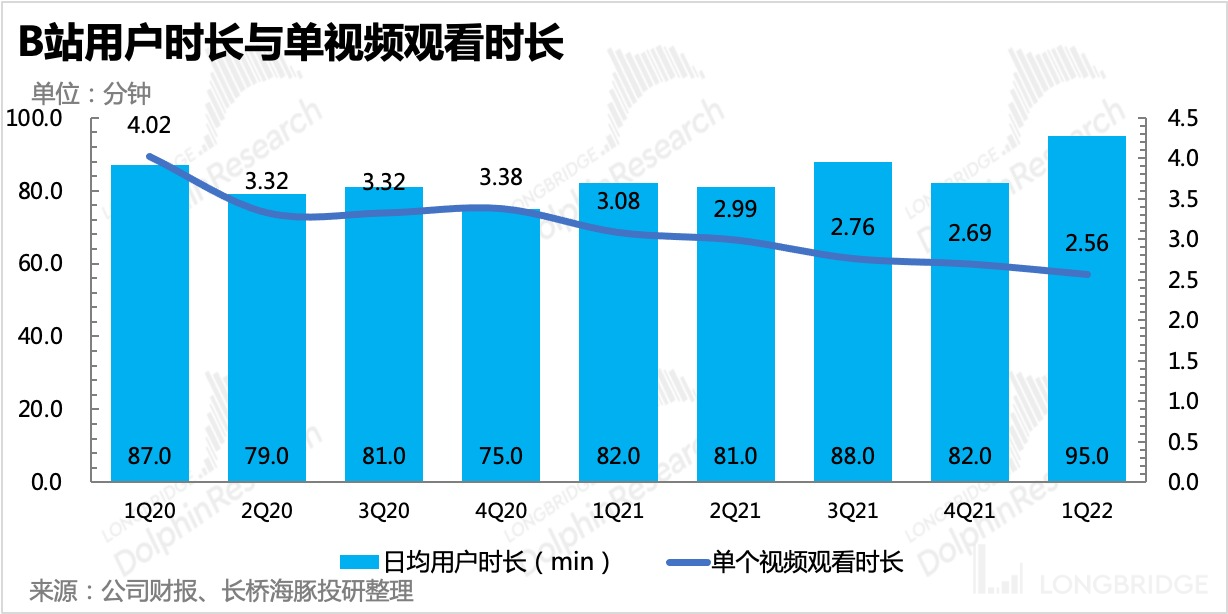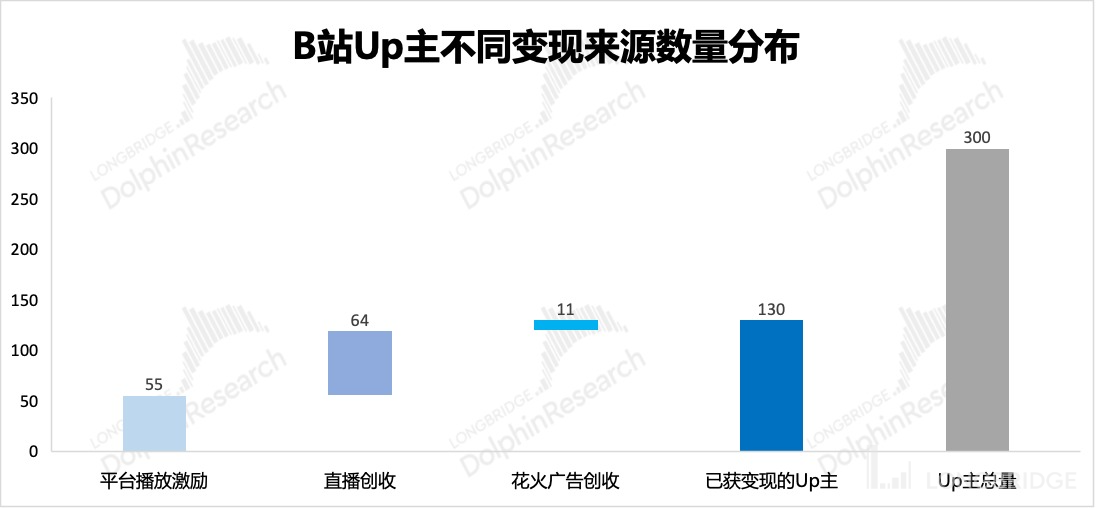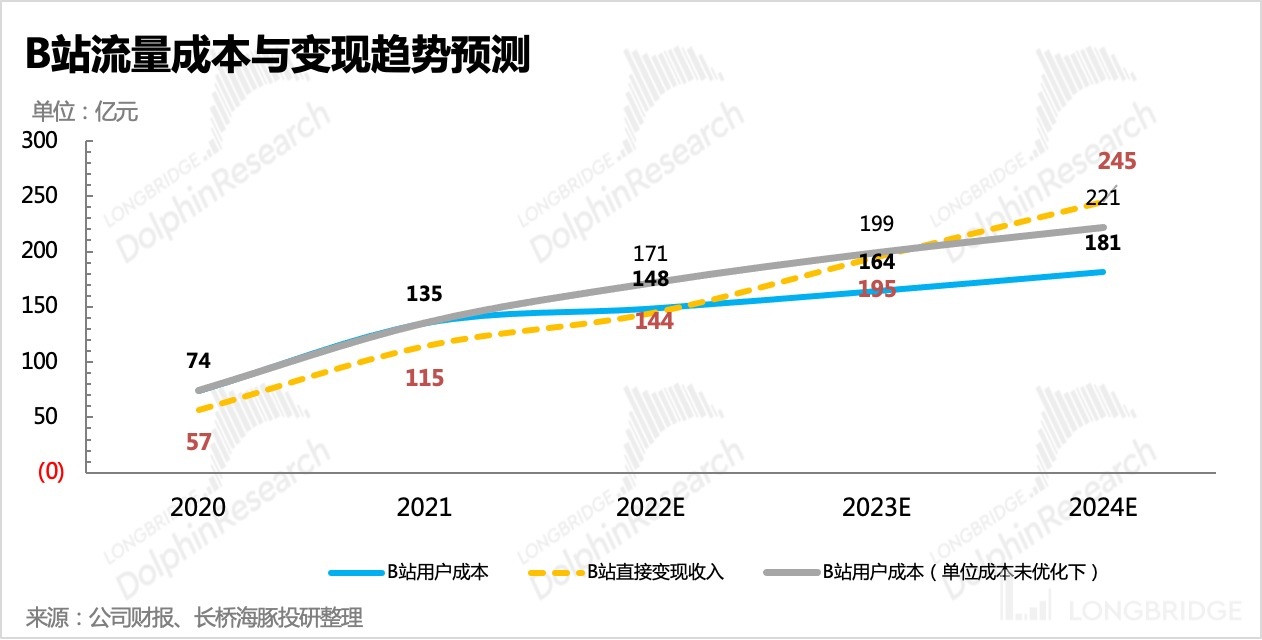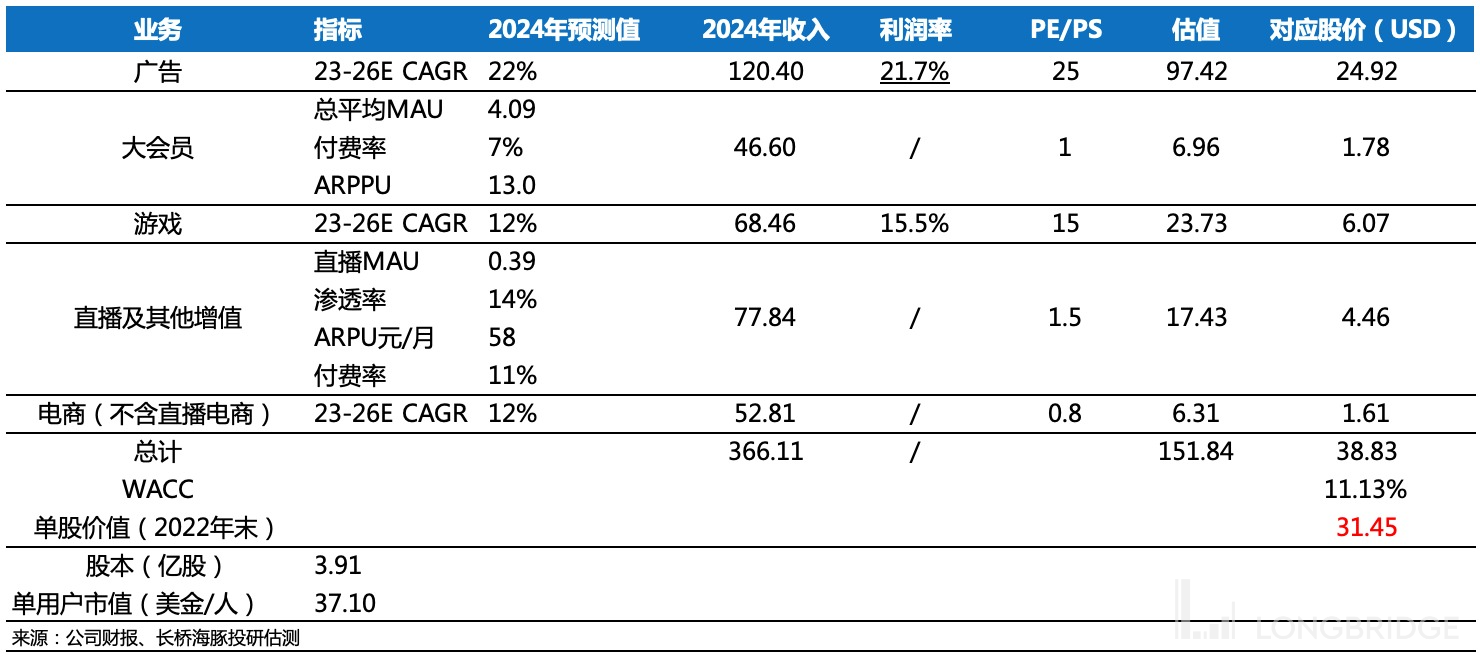Both KUAISHOU-W and Bilibili are suffering from the "blood loss" of giant baby syndrome. Who can recover?
Hello everyone, I am Dolphin!
In the realm of internet channels, there are two platforms that generate the most controversy regarding their future profitability. Supporters and skeptics each have their own arguments, and every financial report becomes a battleground for "calling out" or "being called out".
These two platforms represent the fast-growing economy of Kuaishou and the gathering of young talents on Bilibili. Prior to last year, many investors who cheered for Bilibili's "Generation Z" were dismissive of Kuaishou's struggling transformation, but still held biased views due to the fixed labels associated with Kuaishou. However, with the financial reports of the past two quarters, Bilibili has become the abandoned child that investors have voted against with their feet.
As of now, Bilibili and Kuaishou have wiped out 84% and 79% of their respective valuation bubbles from the peak of last year, but both platforms are still incurring huge losses, which is extremely unfavorable in the context of inflation and interest rate hikes.
However, compared to Bilibili, Kuaishou's situation is not as bad. Signs and trends of reduced losses have been clearly seen in the financial reports of the past two quarters. The monetization ability of short videos speaks for itself, and Kuaishou is also accelerating its release. Moreover, Kuaishou has exceeded market expectations in terms of improving operational efficiency. In addition, finding a differentiated positioning in a timely manner and striving to break free from the shadow of Douyin is also a transformation that the market is more willing to see from Kuaishou.
On the other hand, Bilibili seems to be trapped in the dilemma of struggling to monetize and improve efficiency. Although Bilibili has been taking continuous actions since the beginning of the year, they are mostly focused on accelerating commercialization and reducing costs. However, these efforts have not yet been reflected in the financial numbers, and there are many doubts about Bilibili's execution in commercialization.
Therefore, at this moment, we need to understand the profitability of Kuaishou and Bilibili. Can these two platforms be profitable in the future? What conditions are needed for profitability? Only by clarifying these points and waiting for the turning point when the conditions are met, we believe that there will be significant upside potential for these two growth stocks.
I. Comparing the Numbers: The Business of Traffic for Kuaishou and Bilibili
The success of a business model means that the output exceeds the input. In the case of channel platforms, this means that the revenue generated from monetizing traffic can cover the costs of acquiring and retaining users. In the later stages of traffic growth, as the incremental space decreases and competition intensifies, these costs often remain high.
1. How to define the user cost for UGC platforms?
For platforms like Kuaishou, Bilibili, Zhihu, and Xiaohongshu, which are UGC platforms, the ecosystem consists of the platform, users, and content creators. For the platform, users are the traffic needed for monetization, and content creators are the core assets that attract traffic and activate the ecosystem. The platform needs to provide incentives and commercial channels for content creators. Bilibili's early "powered by love" approach is almost ineffective now.
Therefore, Dolphin believes that the user traffic cost for UGC platforms should not only include the direct cost of user acquisition by the platform, but also the incentives and revenue sharing provided to content creators, as well as the basic content costs that support the platform. In other words, the cost of traffic on the existing platform can be divided into three parts:
(1) Brand promotion: acquiring customers
This refers to advertising placement, which is a relatively traditional method. It usually appears as video ads in other apps, as well as sponsorship or co-branded activities in variety shows and movies, and even brand endorsements, to enhance brand awareness and download penetration.
(2) Cash incentives: acquiring customers + maintaining engagement
Platform acquisition of customers also relies on straightforward cash incentives. For example, in the early days, Kuaishou spent more than half of its sales expenses on this. Judging from the current situation of new user registration incentives on different platforms, Douyin is the most generous, while Bilibili seems to be more laid-back.

Relying solely on cash incentives to attract traffic is prone to "take the money and run." Therefore, in addition to retaining users with more content within the platform, the platform will also allocate a sum of money to stimulate users to prolong their usage experience, which can be considered as the cost of maintaining active users. For example, Kuaishou's "watch videos and receive cash red envelopes" feature in the Kuaishou Speed Edition (according to expert research, Kuaishou still allocates 30% of its sales expenses to video incentives), Spring Festival red envelopes, daily task lists, etc. These expenses are also included in the sales expenses.
(3) Creator revenue sharing: maintaining engagement
As mentioned earlier, this expenditure is essential in the early stages of development for UGC/PUGC platforms. Before content creators have commercialization capabilities, they need platform incentives to sustain content production. The most common practice is to provide incentives to creators based on video views.
However, considering that on UGC platforms, content creators interact with fans through live streaming, live streaming is also a key function that enriches platform content and promotes ecosystem activity. Therefore, we tend to include revenue sharing from live streaming in the user cost.
Based on the above <(1)-(3)>, under the new definition, the user costs of Kuaishou and Bilibili can be considered as domestic sales expenses + creator revenue sharing + content costs.
① User costs for Kuaishou
This refers to the sum of "sales expenses" and "revenue sharing costs" after excluding overseas marketing expenses and advertising alliance revenue sharing.

② User costs for Bilibili
This refers to the sum of "sales expenses" and "content costs" after excluding game revenue sharing costs and game promotion expenses (where game promotion expenses are calculated based on game revenue * 10%).
 2. Monetization through Fundamentals: Advertising, Live Streaming, and Value-added Services
2. Monetization through Fundamentals: Advertising, Live Streaming, and Value-added Services
For channel platforms, the most direct way to monetize is through advertising. However, advertisers also have options for prioritizing their placements, with platforms that have higher user spending power, conversion rates, and overall ROI being more favored by advertisers.
In addition, live streaming rewards are also a natural fit for UGC platforms, as the high interaction between creators and fans naturally extends to the demand for live streaming.
Apart from that, there are other monetization methods such as e-commerce and gaming. However, e-commerce requires the establishment of supply chain infrastructure, which involves more cost inputs and is not considered a simple monetization of traffic. On the other hand, gaming monetization is relatively independent of channel traffic itself. Although having traffic makes it easier to promote games, whether users ultimately make purchases depends on the quality of the games themselves.
Therefore, when evaluating the effectiveness of platform business models, we only discuss two monetization methods: advertising and value-added services through live streaming.
However, different platforms have different monetization effects, mainly determined by the platform's user base and user profiles. Between Kuaishou and Bilibili, Kuaishou is currently clearly ahead.
① In terms of user base, Kuaishou has a wider coverage
Kuaishou targets the entire Internet user base, regardless of age or geographical range. As of the first quarter of 2022, Kuaishou's monthly active users are close to 600 million. Based on its medium- to long-term goal of 400 million daily active users, assuming unchanged stickiness, this corresponds to 700 million users. Compared to the ceiling of 1 billion users on the entire Internet, the penetration rate is already extremely high.
On the other hand, Bilibili has positioned itself as a platform for young users, with "Generation Z" users as its core. Currently, among the nearly 300 million monthly active users, 86% are between 15 and 35 years old.
In Dolphin's earliest in-depth research on Bilibili, an estimation of the potential user space was made. Assuming:
a. Bilibili's penetration rate among the 15-35 age group is as high as 80% (compared to YouTube's 77%)
b. At the beginning of 2022, Bilibili users between 15 and 35 years old account for 86% of the total users, and this proportion gradually decreases to 60% as Bilibili breaks through its circle.
Therefore, considering the trend of declining population growth, Bilibili's user ceiling is likely to be around 450 million. This is still a significant gap compared to Kuaishou.

② In terms of user gender, Kuaishou has more female users with high shopping desires
Generally speaking, in the eyes of merchants, apart from products with special attributes, female users have higher purchase frequency and consumption levels than male users in mass consumer goods.
In the user profiles of Kuaishou and Bilibili, Bilibili has a slightly stronger "masculine" characteristic. In the past two years, Kuaishou has attracted more female users from first- and second-tier cities through the promotion of online literature and short dramas. Therefore, in the eyes of some merchants, Kuaishou has a higher priority for advertising placements compared to Bilibili. From the distribution of advertising categories on the two platforms, we can see that the top three categories for advertising on Kwai are e-commerce, gaming, and entertainment, which are consistent with the industry as a whole. On the other hand, the top three categories for advertising on Bilibili are gaming, 3C electronics, and automotive, indicating a stronger preference for male users' shopping needs.

Looking at the various product categories, besides gaming, the advertising budgets are generally higher for e-commerce and beauty consumption. Bilibili's relatively advantageous 3C electronics advertising does not have a high overall industry budget. However, with Bilibili's expansion into new user demographics, it is expected to attract more female users, thereby improving merchants' inherent impression of Bilibili.

③ In terms of user age, Bilibili has a younger user base, but their purchasing power is also more limited.
With an average user age of 23, Bilibili's user demographic has less wealth accumulation and purchasing power compared to some middle-aged users. This is also a factor that makes brand merchants hesitate to advertise on Bilibili, considering the higher average order value.
Based on points ①-③, we can partially explain why Bilibili's current monetization scale (10 billion in advertising) is much smaller than that of Kwai (100 billion in advertising).
II. What is the root cause of the profitability challenge?
Compared to traditional entertainment platforms, both Kwai and Bilibili are still experiencing user growth, which is impressive. However, the market's patience is wearing thin - despite entering the second half of user growth, neither Kwai nor Bilibili has achieved profitability.
(1) Kwai has set a medium-to-long-term goal of reaching 400 million DAU (daily active users). Assuming the user stickiness (DAU/MAU) remains unchanged, there is still a 15% growth potential.
(2) Bilibili has set a medium-to-long-term goal of reaching 400 million MAU (monthly active users), which corresponds to a 25% growth potential.
Therefore, at this moment, while user growth is crucial for both Kwai and Bilibili, the demand for profitability forces them to accelerate monetization and reduce expenses. Among the operational expenses, apart from optimizing the internal team's efficiency, the cost of acquiring and retaining users takes priority.
Based on the current business model:
① Kwai has already tapped into monetization to a certain extent. The advertising and live streaming revenue in 1Q22 (19.2 billion) is sufficient to cover external costs - user acquisition and retention costs (15.5 billion), but it is still unable to cover internal operational costs such as server bandwidth, equipment depreciation, research and development, and management expenses (10.6 billion).
 ② The situation at Bilibili is even worse. The combined revenue from advertising and value-added services in 1Q22 is 3.1 billion, which is still not enough to cover the user cost of 3.4 billion, let alone the remaining cost of 3.6 billion.
② The situation at Bilibili is even worse. The combined revenue from advertising and value-added services in 1Q22 is 3.1 billion, which is still not enough to cover the user cost of 3.4 billion, let alone the remaining cost of 3.6 billion.

However, combining the analysis of user costs and traffic monetization by Dolphin in the previous section, it can be seen that there are differences in the reasons for the profitability difficulties of Kuaishou and Bilibili.
(1) The "crux" of Kuaishou lies in high user costs
In terms of per-user costs, Kuaishou invests much more in traffic maintenance than Bilibili. Both platforms have seen an upward trend in per-user costs from 2020 to 2021, reflecting the intense competition in the market. However, in the first quarter of 2022, both platforms made significant optimizations. Compared to previous situations, Bilibili's optimization is likely related to the effect of students' holidays, while Kuaishou has genuinely improved user costs while ensuring user growth. Considering the boost from the Winter Olympics in the first quarter, if Kuaishou can continue to optimize this indicator and narrow the gap with Bilibili's current costs, then Kuaishou's business model may be the first to succeed.

(2) The "crux" of Bilibili lies in low monetization ability
Bilibili's main problem lies in the difficulty of monetization. Since advertising is more closely related to daily user activity, we define daily traffic as the product of daily active users and average user duration. We compare the value of monetized traffic between Kuaishou and Bilibili based on the corresponding advertising revenue per unit of traffic. From the trend, Bilibili's traffic value is gradually being explored, but there is still a gap and room for improvement compared to Kuaishou.

Although we mentioned earlier that Kuaishou's user profile is more favored by merchants, Bilibili has lower user maintenance costs, which highlights the user's recognition of Bilibili and leads to a higher natural retention rate. Therefore, as the age of Bilibili users continues to rise, we can expect to see an increase in the overall purchasing power of Bilibili users and gain more recognition from merchants.
In addition, the difference between Bilibili and Kuaishou lies in the scale of daily active users and user duration, which is probably attributed to the addictive mechanism under the short video algorithm recommendation, resulting in a natural advantage. The longest long video in terms of average user duration (70-80 minutes) is actually behind Bilibili's medium-length videos (95 minutes) and short videos (120 minutes). III. Transformation and Self-help of Platforms - Kuaishou Becomes "Long," Bilibili Becomes "Short"
Both Kuaishou and Bilibili have provided relatively clear instructions on their main tasks for this year in terms of accelerating profitability.
Kuaishou's focus is on reducing costs and increasing efficiency, especially in the high sales expenses mentioned earlier. However, the reduced expenditure will be partially allocated to content and revenue sharing costs (such as increasing the introduction of short dramas and long video copyrights), in order to solidify the platform's barriers through content accumulation and improve user retention.
Compared to Bilibili, Kuaishou still has room for optimization in terms of per-user costs. For example, according to research, the first measure taken is to reduce the cash incentives for watching videos, with an expected reduction of nearly 800 million in the second quarter.
If Kuaishou's per-user costs can be reduced to the current level of Bilibili in the medium to long term, it means that Kuaishou will be able to break free from the burden of huge losses at an earlier stage.

On the other hand, Bilibili's management focuses on user growth and accelerating commercialization. This is understandable. Although there is a common impression that Bilibili spends a lot of money on incentives and revenue sharing for creators, compared to Kuaishou, Bilibili's cost issue is not significant (but there is still room for optimization). Instead, the key lies in monetization, which can truly bring profit opportunities to Bilibili.
Although there are no signs of accelerated monetization from the financial report, we can already see Bilibili's actions in business adjustments. The most significant change recently is the launch of the "Immersive Video Stream Promotion" feature at the end of April, which is similar to short video ads. Since the introduction of "Story Mode" vertical videos in the second half of last year, Bilibili has been exploring the gameplay of short videos.
As of the first quarter of 2022, the viewing volume of Story Mode has accounted for more than 20% of the total, and Bilibili's long-term goal is 50%. From the first quarter's situation, although the launch of Story Mode has reduced the average viewing time of individual videos, it has increased the daily total viewing time by 13 minutes compared to the previous period, demonstrating the addictive effect of short videos on Bilibili.

These short video ads are not the fireworks ads that have been criticized for high revenue sharing with Up users, but rather effective ads directly released by merchants on Bilibili. Currently, several merchants including Wild Beast, Gaojiesi, usmile, and Dream Journey have already settled in and conducted initial advertising tests. IV. Profit Imagination for Bilibili
While the success story of Kuaishou is gradually gaining market recognition, controversies surrounding Bilibili are still rampant. Therefore, due to space limitations, Dolphin will focus on discussing Bilibili's profitability.
As we all know, content creators, known as "Up 主" in the Bilibili ecosystem, are the core assets of the platform, and their level of activity has a significant impact. Except for a few creators who rely solely on passion, the majority of content creators can sustain long-term activity because there is a "profit" to be made.
However, according to research, out of the 3 million monthly active content creators at the end of last year, only 1.3 million of them achieved substantial monetization through Bilibili. Among them, 550,000 primarily monetized through platform incentives, while 110,000 creators with a large number of followers earned money through Huahuo advertisements. The remaining creators with smaller fan bases mainly earned money through live streaming.

At the beginning of the year, there were continuous reports about Bilibili adjusting its incentive rules, resulting in many content creators receiving reduced incentives, which led to numerous complaints. Objectively speaking, reducing the revenue share for content creators is detrimental to the ecosystem and not the optimal choice. This suboptimal strategy may have been implemented due to the adverse impact of advertising headwinds on monetization and the demand to reduce losses.
Therefore, although the overall environment this year is unfavorable, accelerating the commercialization of advertisements is crucial for Bilibili. Let's assume that by mid-2024, two years after the launch of short video advertisements, the commercialization has matured. Based on the mid-term targets provided by the management, let's see if Bilibili's profitability can be justified.
Assumptions and Calculation Process for 2024 Operating Indicators:
① Assuming that the platform's monthly active users reach 430 million by the end of the year, with an average of 412 million monthly active users throughout the year. According to the management's medium- to long-term target of DAU/MAU ratio of 30%, the daily active users would be 120 million.
② Assuming that after the continuous improvement of short video penetration rate, the user's average time spent on the platform reaches 110 minutes. With a 50% penetration rate for short video viewing, the average video viewing time would be approximately 2 minutes per user. The daily average number of video views per user would reach 55, resulting in a total daily viewing volume of 6.6 billion and a short video viewing volume of 3.3 billion.
③ Assuming a short video ad loading rate of 7% (currently at the level of Kuaishou), out of the daily 3.3 billion views, there would be 231 million ad views. Based on a general CPM rate of 25 yuan (Bilibili's actual rate may be higher, as it has always been higher than other platforms), this corresponds to an incremental advertising revenue of 520 million yuan per quarter. This incremental revenue is essentially due to Bilibili releasing more ad inventory.
Based on Dolphin's assumptions, the breakdown of Bilibili's advertising revenue in 2024 is as follows:
 In such a scenario, it means that the direct monetization revenue of Bilibili's traffic in 2024 will be 12 billion yuan from advertising and 12.4 billion yuan from value-added services, totaling 24.4 billion yuan. The corresponding user costs (including advertising and value-added service sharing with content creators, content acquisition costs, and excluding game promotion expenses) even if calculated based on the single user cost level in 2021 (54 yuan/person), which is 54*4.1=22.1 billion yuan, is still lower than the monetization revenue **, thus realizing the commercial viability of the basic traffic business model (profitable games and e-commerce can be seen as pure additional incremental profits). However, the 2 billion yuan increase in short video advertising revenue is crucial when looking at the difference.
In such a scenario, it means that the direct monetization revenue of Bilibili's traffic in 2024 will be 12 billion yuan from advertising and 12.4 billion yuan from value-added services, totaling 24.4 billion yuan. The corresponding user costs (including advertising and value-added service sharing with content creators, content acquisition costs, and excluding game promotion expenses) even if calculated based on the single user cost level in 2021 (54 yuan/person), which is 54*4.1=22.1 billion yuan, is still lower than the monetization revenue **, thus realizing the commercial viability of the basic traffic business model (profitable games and e-commerce can be seen as pure additional incremental profits). However, the 2 billion yuan increase in short video advertising revenue is crucial when looking at the difference.
If the management's guidance can be followed in the next 3 years:
a. Maintain a Non-GAAP sales expense ratio of 10-15% in the medium to long term.
b. Align the comprehensive gross profit margin with 30%.
c. Ultimately achieve the goal of balancing Non-GAAP operating profit and loss in 2024.
The overall user costs will be optimized to 18.1 billion yuan, a reduction of 4 billion yuan compared to before. The main difference is that the point in time when traffic revenue fully covers traffic costs has been brought forward by 1 year.

Under the above business development assumptions, Bilibili is expected to achieve positive Non-GAAP operating profit in 2024. Without considering changes in investment income, financial net income, and other income, according to Dolphin's model, Bilibili is expected to achieve positive net profit in 2026.
However, due to the greater uncertainty and risks associated with assumptions beyond 3 years, Dolphin has chosen to evaluate Bilibili based on its operating conditions in 2024, resulting in a neutral valuation of $31 per share, implying PS ratios of 3.6x/2.8x/2.2x for 2022-2024, respectively.

Based on the above analysis, Dolphin summarizes the main points of the article:
① Due to the scale advantage of existing and potential users, short video platform Kuaishou naturally has greater monetization potential than Bilibili.
② The profitability challenge for Kuaishou lies in high user costs. As long as user activity indicators can be maintained while reducing user cost investment, profitability is not a problem for Kuaishou.
③ Bilibili's profitability challenge lies in low user stickiness (low DAU volume), which limits the total duration of traffic, followed by the lower monetization efficiency of mid-length videos compared to short videos, resulting in a smaller space than Kuaishou. However, Bilibili also has advantages. On the one hand, users have high loyalty to the platform (reflecting platform characteristics) and can maintain user activity at a lower cost. On the other hand, although the users are young, they are mostly distributed in first and second-tier cities. They have great potential for future consumption and can attract higher advertising prices.
④ Immersive vertical screen video ads may bring a turning point to Bilibili in the short term, and we will continue to pay attention to the management team's efficiency in promoting this business. Although Bilibili's path to profitability may be more difficult and time-consuming than that of Kuaishou, we believe it will eventually be achieved.
Dolphin's "Bilibili" Historical Articles
Earnings Season
June 9, 2022, earnings review: "Bilibili: Returning to its Original Form after the Carnival?"
June 9, 2022, conference call: "Bilibili: Ecological Operation, Turning Point in Loss Reduction Expected in the Third Quarter (Conference Call Summary)"
March 3, 2022, conference call: "Generating Revenue through Advertising, Steady User Expansion, Cost Reduction through Expense Deduction, Bilibili Wants It All (Conference Call)"
March 3, 2022, earnings review: "Average Performance without Hindrance Leading to Stock Rise? Bilibili's Faith Comes from Ruidi"
In-depth Analysis
May 5, 2022: "Breaking the Boundaries of Entertainment: Exploring Tencent and Bilibili's Vast Universe"
March 22, 2021: "Falling in Value while Remarrying, Is Bilibili a Trap or an Opportunity?"
March 12, 2021: "Longbridge Research: Bilibili Series 2 - Can Bilibili Sustain Itself without Pre-roll Ads?"
March 9, 2021: "Longbridge Research: How Far is Bilibili from Ruidi's 400 Million User Pie?"
Hot Topics
December 14, 2021: "The Carnival is Over, Back to Being a Small Station? Bilibili Needs Pre-roll Ads!" On July 27, 2021, "B Station, the social platform of the Z era, still has scarcity" was published.
Dolphin's "Quick Hand" Historical Research:
Financial Report Season
On May 24, 2022, the financial report review was published "Going against the current, Quick Hand submits a "no-nonsense" report".
On May 24, 2022, the conference call was held "First quarter performance already reflects some impact of the epidemic (Quick Hand conference call summary)".
On March 30, 2022, the conference call was held "In addition to reducing costs and increasing efficiency, Quick Hand also has ambitions to "carry many industries" (conference call summary)".
On March 29, 2022, the financial report review was published "Quick Hand: The countdown to making money in the "iron economy" has begun".
In-depth Analysis
On May 5, 2022, "Breaking the pattern of pan-entertainment: Exploring the vast sea of Tencent and B Station" was published.
On February 24, 2021, "Quick Hand has many shortcomings, where does its value come from?" was published.
On January 26, 2021, "Dolphin Research: The undervalued "iron economy," Quick Hand's market value of hundreds of billions is foreseeable" was published.
On January 15, 2021, "Dolphin Research: Is Quick Hand guilty?" was published.
Risk disclosure and statement for this article: Dolphin Research Disclaimer and General Disclosure





